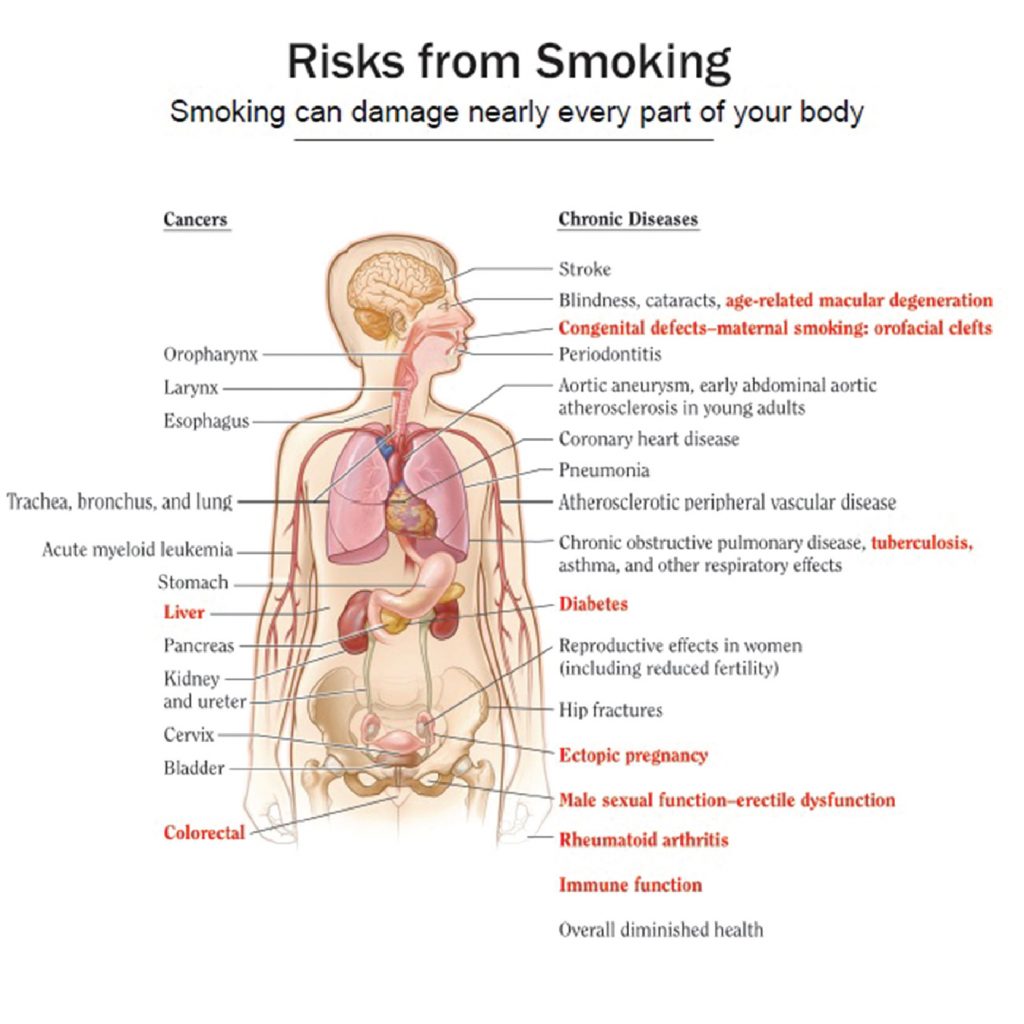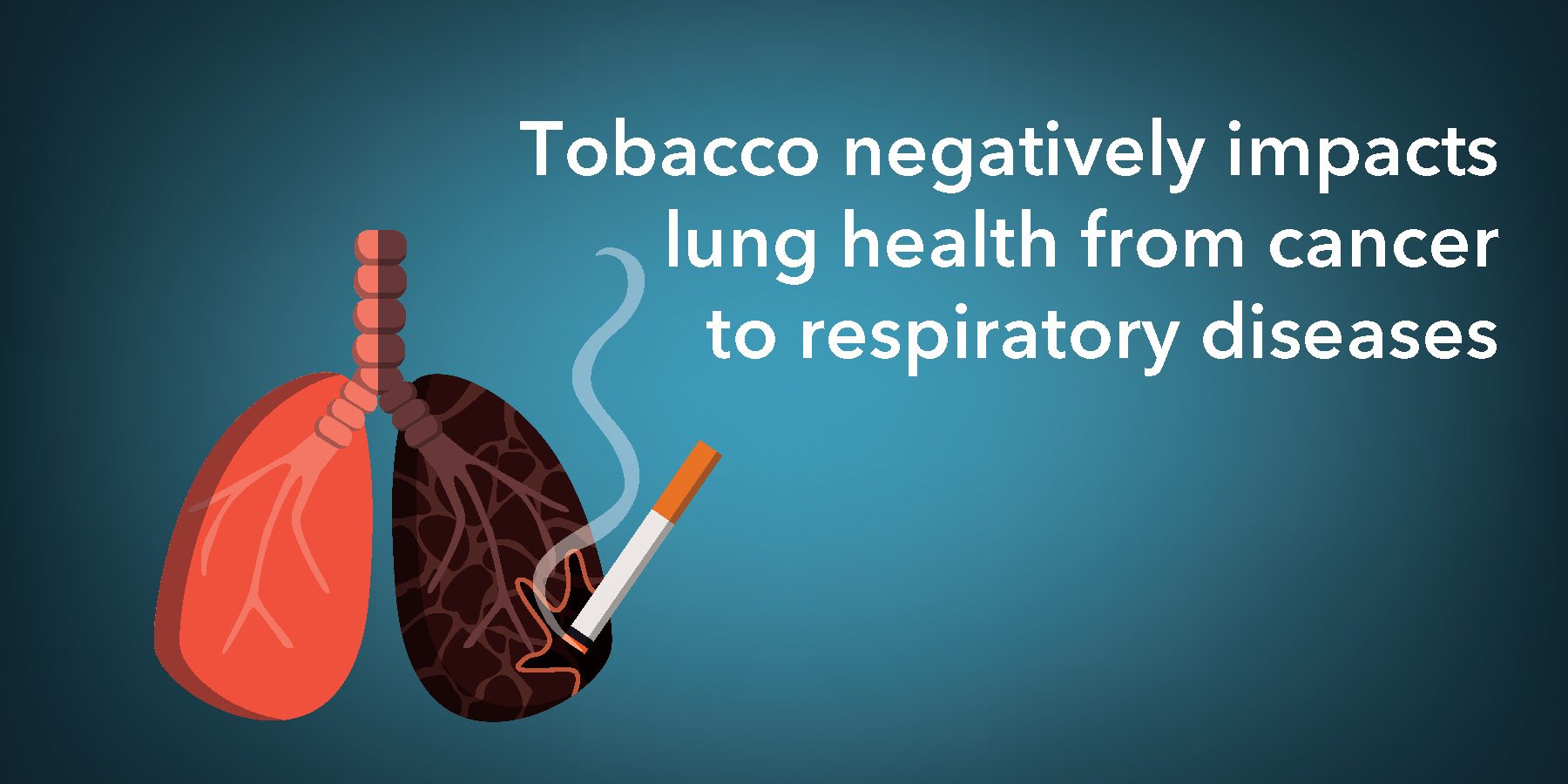Currently in Sri Lanka, 2.1 million people smoke and 12,351 people die annually from smoking which is about 10% of all deaths. Cardiovascular diseases are the most common way of death from tobacco (53%) especially in young. Most people start smoking early and the mean age of initiation of daily smoking is 20.6 years. Health effects of tobacco are multiple and serious including the development of chronic respiratory problems and even lung and oesophageal cancer. Durdans Hospital ensures organised, comprehensive and compassionate care for such conditions through its dedicated pool of specialists and trained nursing care.

Dr Champika Gamakarange, Consultant Physician and In-Charge at The Rare and Complex Diseases Centre at Durdans Hospital said, “Tobacco related lung diseases include chronic obstructive pulmonary disease (COPD) which includes chronic bronchitis and emphysema and lung cancer. In addition to this smoking can worsen asthma or cause COPD to co-exist with asthma to worsen the symptoms. These are mainly associated with tobacco smoking.”
Smoking predisposes individuals to recurrent lung infections like pneumonia or tuberculosis and even fungal lung infections. It can precipitate acute attacks of exacerbations of other lung conditions like bronchiectasis and fibrotic lung diseases. Cancers of the lung parenchyma, trachea-bronchial tree, pleural layers and even oropharyngeal tract all are related to tobacco use.
These lung diseases are the effect of direct as well as second hand (passive) smoking. Unfortunately passive smoking has a significant influence in giving rise to health effects and the figures are worrying. In Sri Lanka, female smokers are much less compared to most European countries. But health hazards are still high due to passive smoking. Children are also exposed to smoking when adult males smoke indoors.
Non communicable diseases especially cardiovascular conditions like coronary heart disease and stroke are essentially related to smoking, mainly in young males. The impact is so high that it is not only health and family that are of concern but economical loss as well.
Dr Gamakarange said, “Nicotine in tobacco is responsible for causing addiction. It alters the dopamine and noradrenaline levels in the brain, which in turn change the concentration ability and mood, that many consumers feel as ‘enjoyable’, less anxious and less stressful. This creates the consumer addiction to tobacco. Later the brain adapts and one needs more smoking to have a similar effect, and finally they might become chain smokers. Nicotine patches, lozenges and other similar products are available to help overcome addiction.”
Tobacco use has a long history running back to 5000 – 6000 BC. Native people of America are said to have used it as medicine and currency and have cultivated it. Later they have started smoking tobacco at their religious ceremonies. Tobacco smoking and planting was introduced to Europe in 1492. The Tobacco industry became popular worldwide with mechanisation and mass production in the 19th century. Tobacco is used in smoked (cigarette, cigars, bidi, pipe smoking) and smokeless (chewing tobacco, beetle, babul, snuff, kreteks) methods.
Currently it is estimated that 15,000 kgs of nicotine are entered in to the human body from smoking tobacco.
According to WHO figures, currently 1.1 billion people smoke around the world and 80% of them live in low and middle income countries.
Tobacco related deaths are more than 8 million each year, and 1.2 of it is due to passive smoking. In Sri Lanka 2.1 million people smoke and 12,351 people die annually from smoking which is about 10% of all deaths.
Cardiovascular diseases are the most common way of death from tobacco (53%) especially in the young.
Most people start smoking early and the mean age of initiation of daily smoking is 20.6 years.
Tobacco, made up of more than 3000 compounds in its natural form, is further chemically changed if produced by means of cultivation, processing and manufacturing. Nicotine, sugars, acids and nitrosamines are among the important contents in tobacco. Cigarette smoking produces more than 5000 chemical compounds, including volatile gaseous (like carbon monoxide (CO) and vapour components and tar.
Durdans Hospital is a pioneering and JCI (Joint Commission International) accredited hospital known for medical excellence and innovation with established centres of excellence in cardiac, orthopaedic, maternity, paediatric, ophthalmology and oncology, etc. Specialists in every discipline are supported by state of the art radiological and laboratory facilities that assist in accurate diagnosis.
For more information on Durdans Hospital services please contact 011 2 140 000













